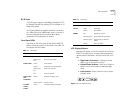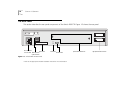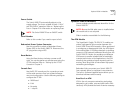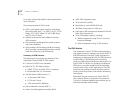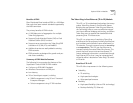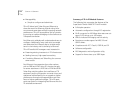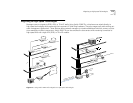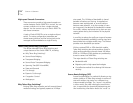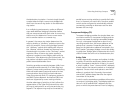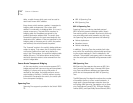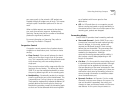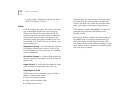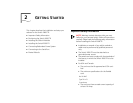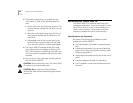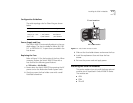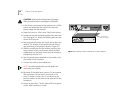
Token Ring Switching Concepts 1-15
the destination ring station. A route is simply the path
a packet takes through a source route bridged net-
work from the source ring station to the destination
ring station.
In a multiple ring environments, nodes on different
rings need additional bridging information before
they can communicate with each other. A source ring
station must first determine if one or more routes
exist to another station on a remote ring.
In general, the source ring station determines the
route by sending a “discovery” packet out across the
multi-ring network. Source routing bridges forward
this “discovery” packet while adding path informa-
tion. Likewise, switches forward any response from
the destination ring station to the “discovery” packet
originator. When a source ring station receives a
response it updates its own bridging table with the
information. After determining the optimal path, the
ring stations include the path information in every
packet transmitted between them.
Switching provides connectivity between LANs, form-
ing enterprise-wide networks. In a Token Ring envi-
ronment, source routing switches connect Token Ring
LANs and enable peer-to-peer and terminal-to-host
communications across both local and wide area
Token Ring networks. Both PC workgroup protocols
and IBM’s Systems Network Architecture (SNA) net-
works are supported by source routing switches.
Another advantage of switching is that it allows the
segmentation of the Token Ring network into multi-
ple rings to reduce traffic on any one particular ring
segment. The adjacent rings may be connected by
parallel source routing switches to provide fault toler-
ance. In the event one switch fails, the other parallel
switch can be configured to automatically maintain
connectivity, providing an alternate route for data
between the two rings.
Transparent Bridging (TP)
Transparent bridging provides the simplest data com-
munication method. In transparent bridging end sta-
tions are not aware of existing intermediate bridges.
As such, a transparent bridge learns about its sur-
rounding network from the source addresses of the
packets that it receives. Forwarding decisions are
based on the destination addresses contained in the
MAC header. Transparent bridges consult their bridg-
ing table (see “Bridge Table) to determine which port
should forward the traffic on to the destination port.
Bridge Table
A switch dynamically manages and updates its bridg-
ing table. All switches receive every packet transmit-
ted on the segments attached to its ports. As a result,
a switch is able to “learn” the source MAC addresses
of each station that transmits packets on its attached
segments. Since a switch never places its own MAC
address in a packet that it forwards, the received
source MAC address always identifies the original
transmitter of the packet.
A switch uses the received source address information
to construct its bridging table. The bridging table con-
tains a list of all received MAC addresses and the
ports on which they were learned. From its bridging



